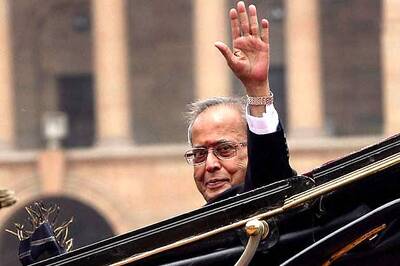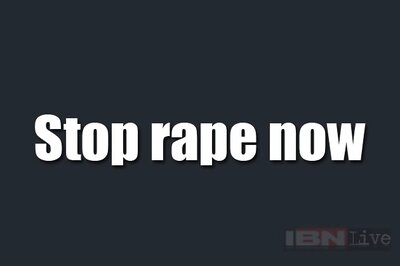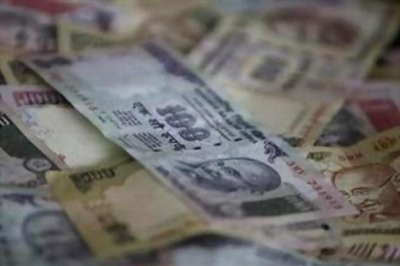
views
What is buccal fat?
Buccal fat is a pad of fat between your cheekbones and jaw. Every person has buccal fat, which are the pads of fat in your lower cheeks that help give your face its shape. Buccal fat varies in size from person to person, though. People who have large pads of buccal fat often have a more rounded face with bigger cheeks, while those who have smaller pads of buccal fat typically have a slimmer face with more cheekbone definition. Meet the wikiHow Experts Nini Efia Yang is a makeup artist with over 10 years of experience in the industry. Danny Gordon is a certified personal trainer with over 20 years of experience in the industry. Yuly Gorodisky, DO, FACOS is a board-certified plastic surgeon based in Oxnard, CA with over 17 years of experience. Dr. Asif Pirani, MD is a board-certified plastic surgeon and founder of the Toronto Plastic Surgery Center based in Toronto, Canada.
What is buccal fat removal?
Buccal fat removal is a surgical procedure to remove buccal fat. Buccal fat removal is an elective cosmetic surgery that involves permanently removing part of or the entirety of the buccal fat pads from both cheeks. This can slim down the face and hollow out the cheek area, which helps highlight your bone structure and makes your cheekbones and jawline appear more prominent. We’ll go over the buccal fat removal procedure in the section below, including what happens before, during, and after the surgery. People may be interested in getting buccal fat removal if they have large cheeks and a more rounded face. We’ll explain who’s a good candidate for buccal fat removal in the sections below. Buccal fat removal surgery has other common names, including cheek reduction, buccal lipectomy, and cheek fat removal.
About Buccal Fat Removal Surgery
Pre-surgery: Research surgeons and book a consultation. Find a board-certified plastic surgeon who has extensive experience performing buccal fat removal surgery and is well-reviewed by their patients. Then, schedule a consultation with them to discuss your goals. They’ll examine your face to determine if you’re a good candidate for the surgery, go over their proposed treatment plan, and take photos of your face. Your surgeon will discuss any surgery risks, too. Come prepared to go over your health history, surgical history, and any medications or supplements you take. Ask questions at your consult to ensure your surgeon is qualified and the surgery is right for you. Some great questions to ask include: What training do you have in buccal fat removal? Do you have before-and-after photos I can see? What are the risks? How are complications handled? What is the expected recovery time? What is expected of me to get the best results? What can I expect buccal fat removal to look like over time? What are my options if I’m unhappy with my results? Find plastic surgeons on the American Society of Plastic Surgeons’ website. Then, check if they’re board-certified on The American Board of Plastic Surgery’s website.
During surgery: Receive anesthesia and a small incision in your mouth. Buccal fat removal is typically performed under local anesthesia, so you’re still awake but don’t feel any pain. Then, your surgeon makes a small incision (about 1 in, or 2.5 cm, long) inside your mouth to expose the buccal fat. They cut off the desired amount of fat and then close the incision with sutures. The surgery typically takes 30 to 40 minutes to complete. Most surgeons use dissolvable sutures, which means they don’t need to be taken out by your doctor. They’ll come out on their own as the incision heals. Buccal fat removal can be completed alongside other facial surgeries. If you’re getting multiple surgeries at a time, your surgeon typically places you under general anesthesia.
Post-surgery: Take care of your sutures and rest for 5-10 days. After surgery, your surgeon will go over their aftercare instructions. This often includes cleaning your mouth with a special mouth rinse and going on a liquid diet for 1 to 2 days. Your surgeon might recommend only eating soft foods for 1 week, too. Most people can return to work or school after 5 to 10 days. If you received general anesthesia, plan to have a friend or family member pick you up, as you cannot drive yourself home after the surgery. Your surgeon will also schedule follow-up appointments with you to check how your surgery is healing and how your results are looking.
Recovery: Expect some swelling and for healing to take 3-4 weeks. Swelling, bruising, and numbness are common after surgery, which usually go away as you heal. Most people make a full recovery after 3 to 4 weeks. However, you typically don’t see your final results until 2 to 6 months post-surgery. How painful is buccal fat removal? Some pain and soreness are normal, though many patients report experiencing very little discomfort. Your aftercare instructions will explain how to deal with swelling and any potential pain, which typically includes taking over-the-counter pain relievers or applying a cold compress.
Buccal Fat Removal Risks
Risks include infection, nerve injury, and facial asymmetry. While buccal fat removal is generally considered a safe surgery, it can come with some risks and complications. These risks include: Infection at the incision site Bleeding Hematoma Deep vein thrombosis Damage to your facial nerves, which can cause muscle weakness or numbness Damage to your salivary glands Differences in cheek size Excessive fat removal, which can lead to a prematurely aged appearance
Buccal Fat Removal Cost
Buccal fat removal surgery typically costs $2,000 to $5,000. However, the price you pay is largely determined by the surgeon you go to and where they’re located. The price doesn’t include other associated costs, like anesthesia and facility fees, so your total cost may be higher. Because buccal fat removal is an elective cosmetic procedure, it isn’t covered by medical insurance.
Who’s a good candidate for buccal fat removal?
People who are healthy, at a stable weight, and have full cheeks. Buccal fat removal is a highly individualized surgery, so it might not be right for everyone. In general, a good candidate is someone with full cheeks and a round face who wants to highlight their bone structure. They must also be physically healthy with no surgical risks, maintain a stable weight, and be a nonsmoker. Who isn’t a good candidate for buccal fat removal? People who have narrow, slim faces with little cheek fat. According to board-certified plastic surgeon Dr. Yuly Gorodisky, DO, FACOS, losing facial fat can make you look older. If you already have minimal fat in your face, removing the buccal fat pads can age you prematurely. What is the best age for buccal fat removal? Surgeons typically recommend that people be between 20 and 60 to get buccal fat removal. Many young people lose facial fat as they mature, making them poor candidates for the surgery. Older adults naturally lose facial fat and skin elasticity, so removing the buccal fat pads can emphasize an aged appearance.
Buccal Fat Removal Pros and Cons
Pros: It slims down your face and highlights your bone structure. For someone who wants a more defined and structured face, buccal fat removal is an effective way to reduce cheek fat and make the cheekbones appear more prominent. This can improve your confidence and self-esteem, especially if you don’t like the look of having a fuller face. The surgery is also permanent, so you can enjoy the appearance of a slimmer face without having to undergo additional procedures. Plus, buccal fat removal is a fast surgery that you typically heal from quickly. Since the incision is made through your mouth, there are no visible scars, either.
Cons: It can lead to asymmetry or a prematurely aged appearance. It’s possible for your surgeon to remove a different amount of buccal fat from both cheeks, which can give your face an uneven appearance. Your surgeon might also remove an excessive amount of buccal fat, which can make you look older than you are. Facial fat is associated with youthfulness, so this can also potentially age you prematurely and lead to a more gaunt appearance as you get older. Buccal fat removal is also a newer surgery, so it’s unclear how people will age with it. This is why it’s important to go to a board-certified surgeon who specializes in facial surgery when considering buccal fat removal. The surgeon will ensure you’re a good candidate and take care to give you the results you want. If you’re not happy with your results, you may require additional procedures to address your concerns. This can include dermal fillers to add volume to your cheeks or a face lift to address sagging skin.
When to Call a Doctor
Call your doctor if you have an infection or aren’t healing well. While uncommon, complications can occur after your surgery. Call your health care provider right away if you notice any of the following symptoms. If you’re experiencing shortness of breath or chest pain, call 911 instead. Signs of infection, including fever, swelling, redness, warmth, pain, tenderness, and pus Bleeding Your incision isn’t healing well or is getting worse An unpleasant taste in your mouth
Does buccal fat naturally go away?
Buccal fat can naturally decrease as you age or lose weight. While the only way to completely remove and get rid of buccal fat is with surgery, the pads of fat can grow smaller and appear less prominent as you age. This is because facial fat loses volume as you get older. Losing weight can also contribute to smaller buccal fat pads and a slimmer face. According to Dr. Gorodisky, losing fat in general can contribute to fat loss in your face. However, how much buccal fat you naturally lose varies from person to person. Some people naturally store fat in their face or have a rounded face shape, so their cheeks might maintain fullness for longer.
Other Ways to Get a Slimmer Face
Contour and highlight your cheekbones with makeup. According to makeup artist Nini Efia Yang, contouring your face is a great way to make it appear slimmer and more structured. She says that anything you contour looks smaller, so contouring under your cheekbones helps your cheeks appear less full. On the other hand, whatever you highlight appears bigger. When you highlight your cheekbones, they look more prominent. To contour your cheekbones: Makeup artist Alana Schober says to apply the contour just under your cheekbone in the shape of a banana, taking the product from your cheek to the top of your ear. Then, use a brush to buff the product upward. This blends it out and helps lift up your cheek area. To highlight your cheekbones: Makeup artist Laura Menendez says to dust the top of your cheekbones with highlighter in an upward motion using a small fluffy brush or fan brush. She suggests taking the product from the center of your eye to your hairline. To contour the rest of your face: Makeup artist Yuka Arora suggests blending contour into the perimeter of your forehead and along the sides of your temples to help slim and define your face further. Makeup and beauty specialist Miranda Mendelson says you can make your jaw look more defined by sweeping the contour along the edge of your jawbone and then blending the product toward your neck.
Lose excess fat through diet and exercise. While there’s no guarantee that losing excess weight will reduce the size of your cheeks, certified personal trainer Danny Gordon says, "If there is fatty tissue in the face…the leaner your body gets, the more definition…you will probably see." To help lose weight, eat a balanced diet of protein, complex carbohydrates, and healthy fats. Aim to eat at a slight caloric deficit to reduce fat healthily. Then, make a plan to get daily exercise and strength train several times each week. Personal trainer John Diaz explains that you can’t spot reduce fat from one particular area, such as your cheeks. If you want a specific spot to appear slimmer, he says you have to lose weight overall. Remember that some people naturally have fuller faces and larger cheeks. You might store fat in your face, no matter your weight.
Opt for a different cosmetic procedure, like fillers. Board-certified plastic surgeon Dr. Asif Pirani, MD says that there are other cosmetic procedures that can help your cheeks appear more hollow and your face appear more slim. As always, do your research and consult with a qualified physician or plastic surgeon to determine if these treatments are right for you. Some of these procedures include: Cheekbone and jawbone filler: Filler is a non-surgical procedure that can add volume and structure to your face. When placed on top of your cheekbones and along your jawline, Dr. Pirani says this can make your cheeks look slimmer in comparison. Cheek and jaw implants: Implants are a surgical option that also add structure and definition to your face. This is done by placing silicone implants on top of your cheekbone or jawline. Dr. Pirani says implants work in a similar way to fillers, helping to create hollowness in the cheek area. Midface lift/cheek lift: A midface lift is a surgical procedure that involves tightening the skin and moving around fat in the cheek area to create a more sculpted, lifted, and youthful appearance. This can reduce the fullness of your face and better highlight your cheekbones.
Final Takeaways
Buccal fat is a natural pad of cheek fat that can be removed with surgery. Everybody has buccal fat pads in their cheeks, though their size varies from person to person. Some people have more voluminous buccal fat pads, which can give them more rounded cheeks. While buccal fat removal surgery makes it possible to remove the fat and achieve a more slimmed-down appearance, there’s nothing wrong with having larger cheeks—they’re not something you need to fix. In fact, lots of people actually want to add fat to their face as they get older. Having a full face is associated with youthfulness, so it can help you look young even as you age.




















Comments
0 comment